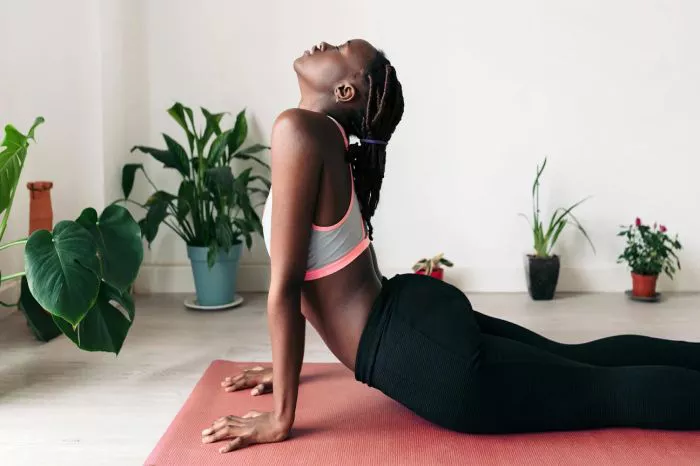Ashtanga Yoga is a dynamic and structured form of yoga that emphasizes synchronizing breath with a progressive series of postures. Rooted in ancient yoga traditions, Ashtanga Yoga offers a disciplined approach to physical and mental well-being. In this article, we delve into the history, key elements, and practice of Ashtanga Yoga, including its foundational poses and recommended courses for practitioners of all levels.
History of Ashtanga Yoga
Ashtanga Yoga traces its origins to the ancient sage Patanjali, who codified the Yoga Sutras—a foundational text outlining the philosophy and practice of yoga. However, the modern iteration of Ashtanga Yoga is largely attributed to Sri K. Pattabhi Jois (1915–2009), an esteemed Indian yoga teacher who developed the Ashtanga Yoga system in the 20th century.
Pattabhi Jois learned Ashtanga Yoga from his teacher, Krishnamacharya, and later established the Ashtanga Yoga Research Institute in Mysore, India. His teachings emphasized the importance of a disciplined and structured practice, known as the “Eight Limbs” of yoga, which include moral observances, physical postures (asanas), breath control (pranayama), and meditation.
Key Elements of Ashtanga Yoga
Vinyasa: Ashtanga Yoga is characterized by a dynamic flow of movements synchronized with breath (vinyasa). Each posture is linked with specific inhalation and exhalation patterns, promoting internal heat and detoxification.
Tristhana: The practice of Ashtanga Yoga incorporates three key elements—posture (asana), breath (pranayama), and gazing point (dristi). These components work synergistically to focus the mind and cultivate inner awareness.
Asana Sequence: Ashtanga Yoga follows a set sequence of postures divided into primary, intermediate, and advanced series. The Primary Series (Yoga Chikitsa) focuses on foundational poses to detoxify and align the body. The Intermediate Series (Nadi Shodhana) builds strength and flexibility, while the Advanced Series (Sthira Bhaga) deepens the practitioner’s practice.
Bandhas and Drishti: Ashtanga Yoga incorporates bandhas (energy locks) and drishti (gazing points) to channel energy and concentration. Bandhas engage specific muscle groups to create stability, while drishti directs the gaze to foster inner focus and alignment.
Ashtanga Yoga Poses (Asanas)
Ashtanga Yoga features a comprehensive sequence of postures designed to purify the body, enhance flexibility, and cultivate strength. Some foundational poses commonly practiced in Ashtanga Yoga include:
Sun Salutations (Surya Namaskar): A dynamic series of postures that warm up the body and synchronize movement with breath.
Standing Poses: Includes Warrior series (Virabhadrasana), Triangle pose (Trikonasana), and Extended Side Angle pose (Utthita Parsvakonasana).
Seated Poses: Forward bends (Paschimottanasana), twists (Ardha Matsyendrasana), and hip openers (Baddha Konasana) are integral to Ashtanga Yoga practice.
Finishing Poses: The practice concludes with inversions (Headstand, Shoulderstand) and relaxation poses (Corpse pose – Savasana) to integrate the benefits of the practice.
Courses and Training in Ashtanga Yoga
Ashtanga Yoga offers structured courses and training programs for practitioners seeking to deepen their practice or become certified instructors. These courses typically cover the following aspects:
Foundational Principles: Courses introduce the fundamental principles of Ashtanga Yoga, including breathwork, alignment, and philosophy.
Asana Sequences: Participants learn the Primary Series and its variations, progressing to intermediate and advanced sequences.
Teaching Methodology: Aspiring instructors receive training in effective teaching techniques, sequencing, and modifications for different levels.
Philosophy and Ethics: Courses explore the philosophical underpinnings of yoga, ethical guidelines (yamas and niyamas), and lifestyle practices.
Conclusion
Ashtanga Yoga is a transformative practice that offers physical, mental, and spiritual benefits through disciplined practice and self-inquiry. Rooted in ancient traditions and refined by modern practitioners like Pattabhi Jois, Ashtanga Yoga continues to inspire yogis worldwide to cultivate strength, flexibility, and inner peace. Whether you’re a seasoned practitioner or new to yoga, exploring Ashtanga Yoga can deepen your understanding of yoga’s transformative power and guide you on a journey of self-discovery and holistic well-being.
Related Topics:
7 Yoga Poses for Toning, Strengthening, Flexibility


